NVIDIA Tegra K1 Preview & Architecture Analysis
by Brian Klug & Anand Lal Shimpi on January 6, 2014 6:31 AM ESTThe GPU
Despite the Denver surprise, the big story behind Tegra K1 is its GPU. Prior to K1, all previous Tegra designs implemented some derivative of what became known as the GeForce ULP core. This was a non-unified architecture that, at times, looked a lot like NV40. The design was never all that impressive from a performance or power efficiency standpoint. It was cost effective and often constrained by a narrow memory interface.
Going into Project Logan, which became Tegra K1, NVIDIA made the decision (around 3 years ago) to abandon the GeForce ULP roadmap and instead combine mobile and PC GPU roadmaps. Tegra K1 would be the first design to leverage a PC GPU, in this case Kepler. The bigger implication is that all future Tegra SoCs will integrate PC GPUs. The even crazier part of all of this is that all future NVIDIA GPUs will start out as mobile first designs (including Maxwell). Productization and market availability may happen in a different order, but all architectures will start as mobile designs and then be adopted to fit other, higher power segments. This is very much like Intel’s mobile-first realization of the mid-2000s with regards to notebook processors, but with NVIDIA and smartphone/tablet GPUs.
Kepler makes the move into mobile largely unchanged. This is a full Kepler implementation with the same size register file, shared L1 and is 100% ISA compatible with its big brother. It turns out that Kepler, as it was originally designed, was pretty good for mobile. If you take a GeForce 740M (2 SMX/384 CUDA core design), you’re looking at roughly a 19W GPU. Of that 19W, around 3W is memory IO, PCIe and other non-GPU things. You can subtract another 6W for leakage, bringing you down to 10W. Now that’s a 2 SMX design, so divide it in half and now you’re down to 5W. Drop the clock from 1GHz down to 900MHz, and the voltage as well, and now we’re talking around 2 - 3W for the GPU core and that’s without any re-architecting. Granted you can’t just subtract out things like leakage like that, but you get the point. Kepler wasn’t a bad starting point for a good mobile GPU design.
Tegra K1 features a single SMX (in a single GPC), which amounts to 192 CUDA cores. NVIDIA made the rookie mistake of calling Tegra K1 a 192-core processor, which made for some great headlines but largely does the industry a disservice.
Tessellation and geometry engines aren’t crippled compared to desktop Kepler. FP64 support is also present, at 1/24 the FP32 rate. There are 4 ROPs and 8 texture units, down from 16 in the PC version of Kepler. The big changes however are in the interconnects between all of the parts of the GPU.
The bigger implementations of Kepler have to be able to efficiently move data between multiple SMXes, ROPs and memory controllers. The interconnect fabric needed to do that doesn’t scale down well for mobile, where in many cases we’re dealing with one or two of those things instead of a dozen. By removing the complexity that exists in the bigger Kepler’s fabric you limit the ability for mobile Kepler to scale, but then again mobile Kepler is never going to scale to the sizes of big desktop GPUs so it’s not an issue. There are other changes outside of interconnect, with improved clock gating among other focuses on power efficiency.
NVIDIA updated the texture units to support ASTC, something that isn’t present in the desktop Kepler variants at this point. NVIDIA also hopes to use the GPU’s color compression features to reduce memory bandwidth requirements in UI rendering and not just 3D games.
With the changes NVIDIA made to the design, Kepler ends up being a < 2W GPU perfect for mobile. NVIDIA provided us with some data showing SoC + DRAM power while running GFXBench 3.0 (Manhattan), an OpenGL ES 3.0 test:
The data is presented in NVIDIA’s usual way where we’re not looking at peak performance but rather how Tegra K1 behaves when normalized to the performance of Apple’s A7 or Qualcomm’s Snapdragon 800. In both cases NVIDIA is claiming the ability to deliver equal performance at substantially better power efficiency.
NVIDIA shared some live demos that echoed the data above. Peak performance was capped to that of the A7 or Snapdragon 800, but SoC level power was always lower. It remains to be seen what power consumption looks like in a shipping configuration (which is almost always optimized for peak performance not equal performance at lower power), but it’s safe to say that concerns about Kepler being too power hungry for mobile are overrated.
The most compelling argument in favor of putting Kepler in a mobile SoC actually has to do with its API support. In one swift move NVIDIA goes from being disappointing in API support to industry leading. Since this is a full Kepler implementation (just a lower power/performing version) Tegra K1 maintains full API compatibility with NVIDIA’s flagship GeForce products. OpenGL ES 3.0 is supported but so are full OpenGL 4.4, DX11 and CUDA 6.0.
NVIDIA made it a point to say that high-end games developed for the PC or even current generation consoles could be ported over to Tegra K1 without issue. It’s perhaps over reaching a bit to claim the latter given the delta in performance (which NVIDIA hopes to make up in 4 generations!), but you can definitely argue that titles built for the previous generation of consoles (Xbox 360/PS3) could easily be ported to Tegra K1.
At its CES press conference NVIDIA teased the idea that Tegra K1 is actually more powerful than the last generation of consoles. The slide below attempts to drive that point home:
With a GPU clock of 950MHz (admittedly, a bit on the high end), NVIDIA can deliver substantially more raw horsepower than either previous generation console (192 CUDA cores * 2 FLOPS per core * 950MHz). Peak texture filtering performance and more importantly, memory bandwidth are lower than what was possible on these consoles but the numbers we’re talking about here aren’t substantial enough to prevent porting from happening. There may be some optimization needed but it definitely looks like Tegra K1 is the first mobile platform that can more or less run Xbox 360/PS3 titles, at least from a performance standpoint.
In pursuit of making porting and game development as simple as possible, NVIDIA demonstrated its NSight Tegra plugins for Visual Studio. Without changing the IDE that developers are used to, NSight Tegra allows developers to use the NDK toolchain all within Visual Studio. I’m not enough of a developer to know whether or not NVIDIA’s efforts in this space truly make life easy enough to port Xbox 360/PS3 games over to Android, but its VS integration demos looked convincing at least.
NVIDIA had a port of Serious Sam 3 running on Tegra K1 demo hardware just fine. Any games that are prepped for Steam OS are very easy to port over to Android. Once you make the move to OpenGL, the rest is allegedly fairly simple. The Serious Sam 3 port apparently took a matter of a couple of weeks to get ported over, with the bulk of the effort going into mapping controls to an Android environment.


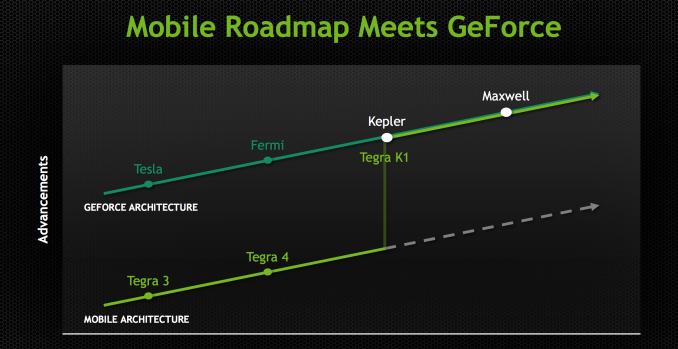


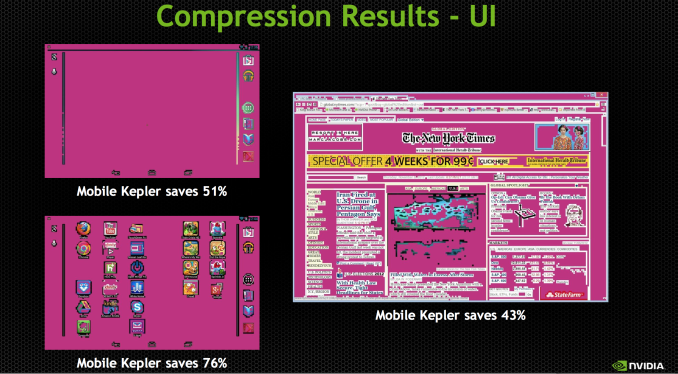
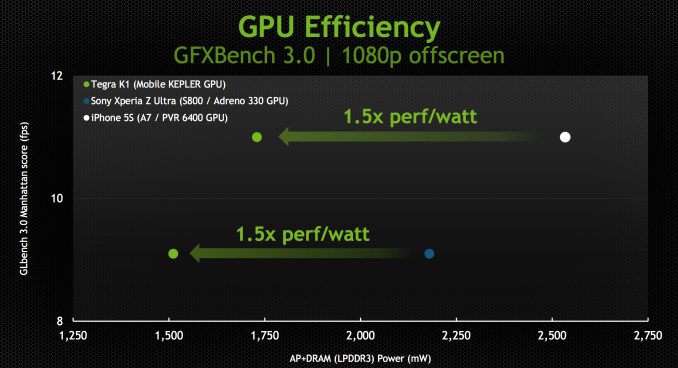
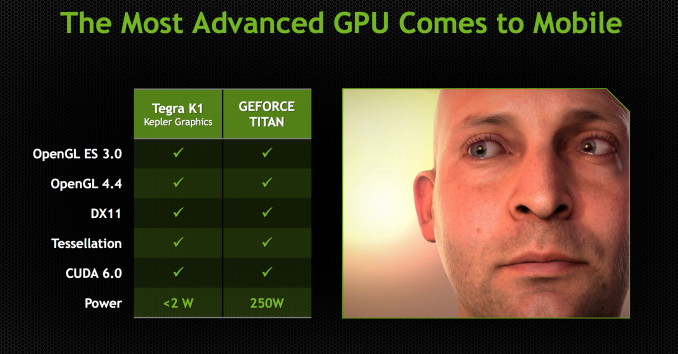
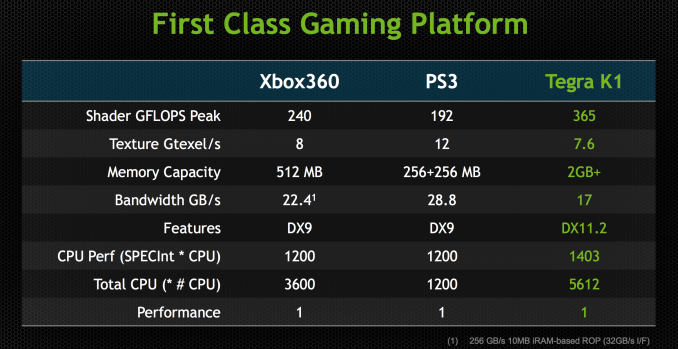








88 Comments
View All Comments
da_asmodai - Monday, January 6, 2014 - link
This articles says first, first, first for Kepler core in mobile but it's not out yet and I believe everything that's claimed as a first in this article is also supported by the Adreno 420 in the already announced Snapdragon 805. I'd like to see a side by side spec comparison of Kepler, Adreno 420, and PowerVR Series 6XT.dwforbes - Monday, January 6, 2014 - link
"FP64 support is also present, at 1/24 the FP32 rate"Should this 1/2 the FP32 rate, or is it really so crippled?
Ryan Smith - Monday, January 6, 2014 - link
No, 1/24 is correct. It's so that you have native FP64 when you need it, but you aren't wasting die space on precision you aren't going to use.ddriver - Monday, January 6, 2014 - link
nvidia being cheap once again, deliberately ruining compute performance like they did with desktop GPUs for years. And let me guess, no openCL support either? Thanks but no thanks, gonna stick to qualcomm and samsung mobile platforms and amd/radeon on the desktop. And for what? To push their ridiculously and shamelessly overpriced "professional" products?GTX 780 DP @ 1/24 SP
R9 290 DP @ 1/8 SP
R9 280 DP @ 1/4 SP
Loki726 - Monday, January 6, 2014 - link
Adding big double precision units has real area and power costs (you typically can't rail gate off individual functional units). If you put full-rate double precision units in a mobile SoC it would just sit there draining your battery life.ddriver - Monday, January 6, 2014 - link
Unfortunately, power efficiency is just the excuse to deliberately cripple compute performance of consumer products. As you see, AMD has no problem providing DP support with lower penalty, which is the reason my compute farm runs radeons exclusively, because the performance per $ ratio completely destroys prosumer products. I do realize I am a very specific and narrow case, since I couldn't care less about gaming and graphics performance, since I use it only to rasterize the compute output, but still... why not go for a more performing design, considering it is not that much about efficiency but the greed for the fat profit margins of teslas and quadros that motivates nvidia to cripple DP performance to such a horrendous extent.Loki726 - Monday, January 6, 2014 - link
AMD doesn't release a mobile GPU part, and the Qualcomm parts which are based off of the old AMD VLIW5 design that they bought from AMD don't include double precision. Every little bit of power matters in mobile.ddriver - Monday, January 6, 2014 - link
The 1/24 DP performance does not come as a mobile-dedicated design, even the GTX 780 is crippled this way, even though it is an enthusiast part, where power efficiency is the least concern.Loki726 - Monday, January 6, 2014 - link
They are different strategies. Neither one is ideal for everyone.Putting double precision hardware into consumer parts is effectively asking
gamers to pay for extra area and power. I do agree that this is less of an
issue in desktop parts compared to mobile, but it is still an issue and GPUs
have enough ALUs in them that you would notice it if every one of them got 10%
less efficient in benchmarks.
AMD builds one chip and sells it into both compute and graphics markets. In
order to make it appealing for compute applications they add double precision.
They make gamers pay for this even though they never use it, but they don't have
to pay the design costs of building multiple chips. NVIDIA builds two
different designs. One chip for compute and another one for graphics (although
this round they also sold the compute chip into the graphics market - Titan).
Presumably they do this because they think that they can recoup the extra cost
of building a different chip that only compute users buy, and by doing so
they don't make gamers pay extra for double precision.
The compute chip has extra features like more registers, ECC, more double
precision units, dynamic parallelism, etc. Chip design is expensive. Think
hundreds of millions of dollars for a new design. If there were just as many
users of compute GPUs as there are gamers who buy graphics cards, the prices
would probably come down a lot.
I'm with you that I would like to have cheaper compute parts with full double
precision support, but I think the only real way to drive down chip prices is to
make them a commodity. It won't happen until there is a killer compute app
that makes every desktop owner want to go out and buy a compute GPU.
ddriver - Tuesday, January 7, 2014 - link
And how do consumers exactly "pay extra" for the better DP performance when AMD GPUs are overall much better value than nvidia gpus? It seems to me that if the extra cost is as high as you believe it is (which it really isn't) then it is AMD that pays it with its profit margins.